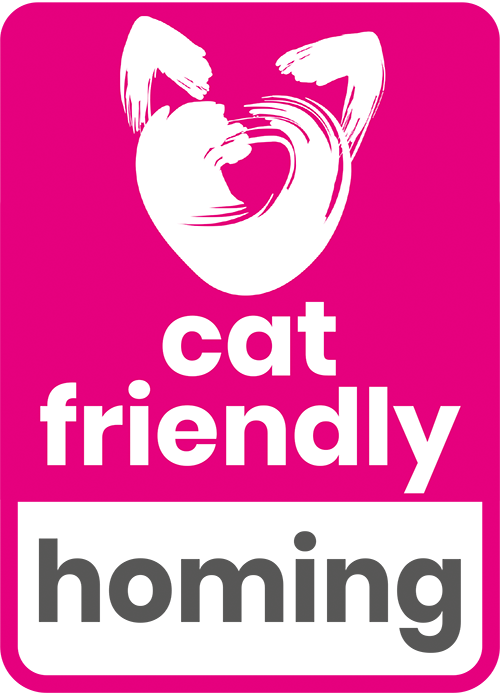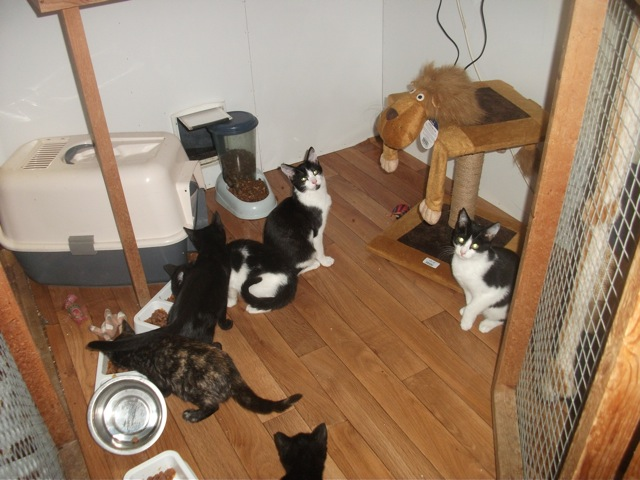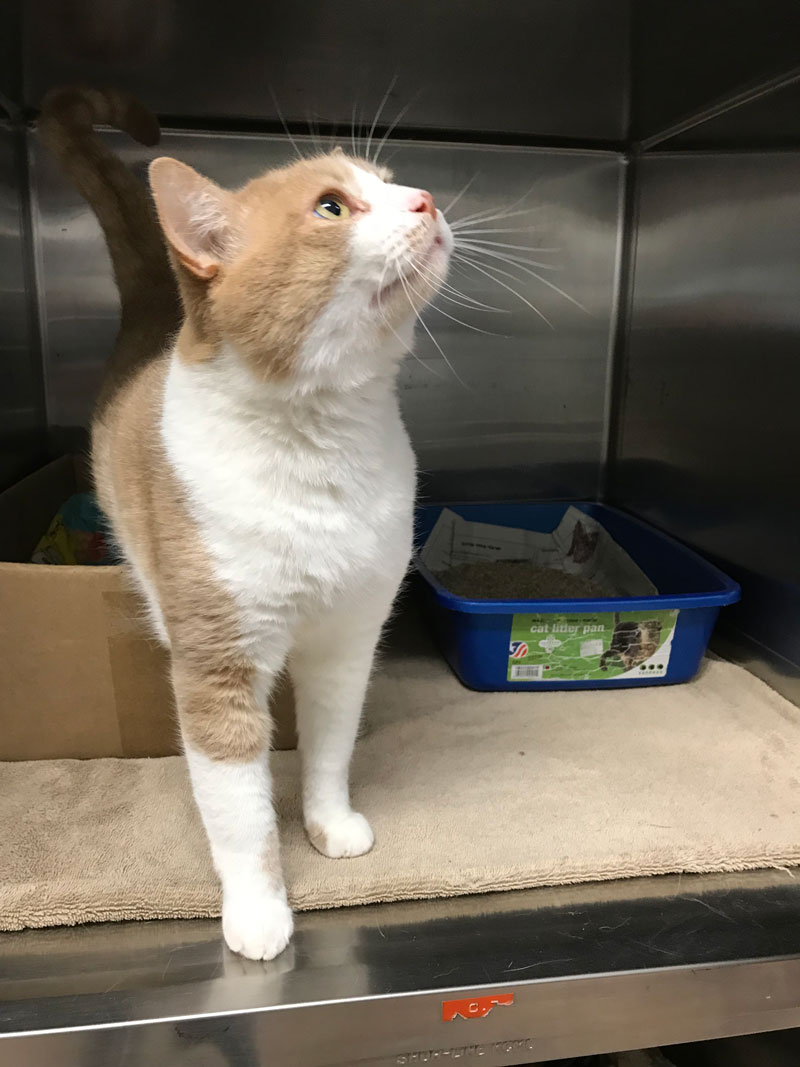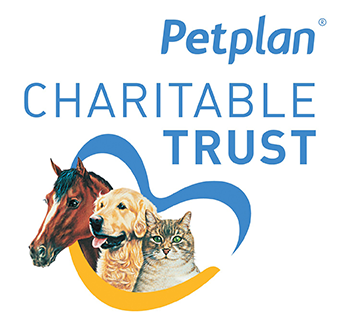 Intake – admit wisely
Intake – admit wisely
This section relates to taking cats into the homing centre.
- How many cats should you take in?
- Which cats should you take in?
- What can you find out about each cat?
How many cats should you take in?
It is often difficult to turn any cat away, however, taking in every cat means that you rapidly fill to bursting. At this point, despite your best efforts, the welfare of the cats will be compromised. A feeling of being utterly overwhelmed can ensue.
The questions you should ask yourself are:
- ‘Am I currently able to monitor and respond to each cat’s individual needs?’
- ‘How many cats am I able to care for well?’
This means being able to assess every individual for signs of ill health or distress and have the resources (time, finances, staff and housing flexibility) to be able to provide the necessary solutions to improve care.

Can all these cats be cared for well? Source Ian MacFarlane

What if every pen had six cats? Could you provide optimum care for every individual?
Occupancy: maximum versus optimum
- The ‘maximum’ occupancy of your homing centre is using all your available spaces, also known as your capacity, to fit cats into
- The ‘optimum’ occupancy is the number of cats you can care for well (while minimising their distress, length of stay, and giving individual care) with your
existing resources
| Useful information:
Have a look at this website about the Million Cat Challenge, an initiative from North America to change ways of working in the sector to save one million cat lives, that talks about ‘Capacity for Care’, highlighting the same recommendation. https://www.millioncatchallenge.org/resources/capacity-for-care |
| Here’s what might happen if you work beyond your optimum occupancy:
You have 25 single cat units in your homing centre and every unit is full. You and your team are working flat out just cleaning and feeding, and as a result, each cat is not carefully monitored. Clinical signs of illness are being missed, as are cats suffering from chronic distress, and it is making them difficult to home. Another consequence of this is an outbreak of cat flu, resulting in many of the cats in your care getting very ill and throughput grinding to a halt. You are forced to close your intake during the outbreak so you can’t take in any of the cats needing help, and you only home 11 cats over the following two months. What if you decided that your optimum occupancy was 15 cats, leaving 10 units empty? You and your colleagues work thoroughly and efficiently, having time to discuss each individual cat’s needs based on your observations and what you know about them from their past. Each cat is being carefully monitored so you can identify those that are distressed or physically unwell and you act immediately and manage their care accordingly. As a result, the cats are comfortable, they have good welfare (physical health and mental wellbeing), and they ‘sell’ themselves well to potential adopters as they are viewed playing and moving around in their pens. You now have more time to work in the community, advertise your cats, and spend time with potential adopters. Over that same two-month period you can successfully home 48 cats! |
Finding your optimum occupancy
- There is no specific recommendation regarding staff:cat ratio
- Optimum occupancy may fluctuate depending upon the demands of the cats you have at any time, eg if you have complex medical cases which require more staff time you should not bring in a cat off the waiting list when a cat is homed, in order to give yourself time to care well for the cats you already have
- Don’t forget that staff time should not just be spent caring for the cats, as the priority must always be to find the right homes for them as quickly as possible. Actively encouraging the local community to adopt cats is time valuably spent (see working with the community)
- Planning is key – maintaining a steady flow of cats going out to their new homes enables you to take in cats that you know are waiting
- Working at optimum occupancy also means you keep some space free for unexpected intake eg emergencies or cats that have previously been homed and need to be returned to the centre
- It is also useful to be aware of other organisations in your area which may have capacity that can be shared or they may be able to support homing of particular types of cats
Working at optimum occupancy to care well for cats means that each cat is confined for the shortest possible period of time, because:
- Each cat gets individual care, is less distressed and sells itself better to potential new owners
- Cats are not held back as a result of illness or infectious disease outbreak
Therefore…
- More cats are homed
- More cats can be taken in (as space becomes available)
- More cats are helped in the long term!

By working at optimum occupancy each cat gets individual care (Source Vicky Halls)
| Useful information:
N, Berke O, Flockhart T, Bateman S, Coe JB. Risk factors affecting length of stay of cats in an animal shelter: A case study at the Guelph Humane Society, 2011–2016. Preventive Veterinary Medicine, Vol 148, p44-48 This study published in 2017 provides evidence that the Capacity for Care programme is associated with a reduced length of stay for cats; suggesting it is a suitable programme to improve cat welfare. —– A pilot study documented that a 40% reduction in the number of cats visible for adoption more than doubled the frequency with which potential adopters actually left with a cat. |



